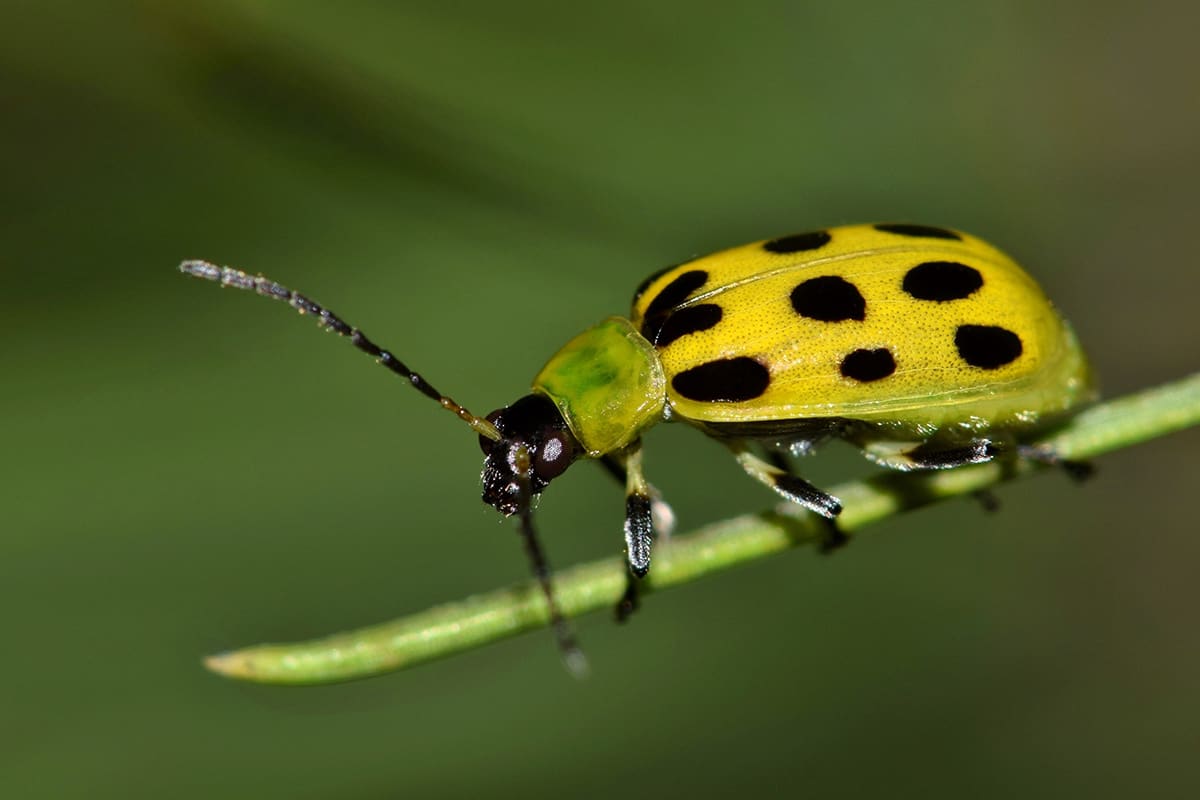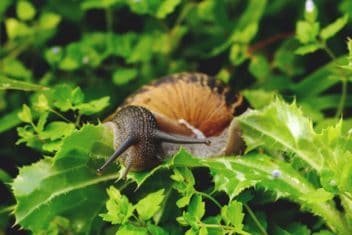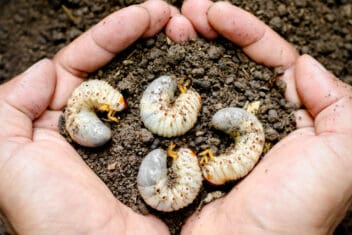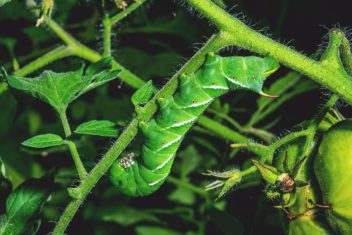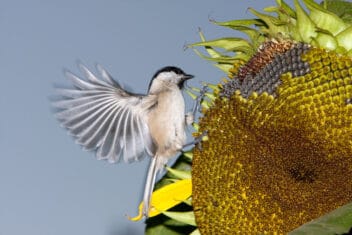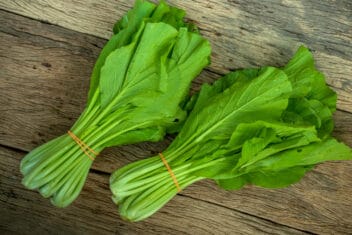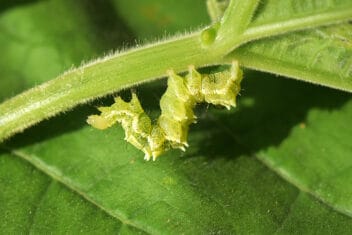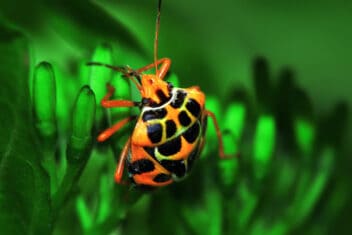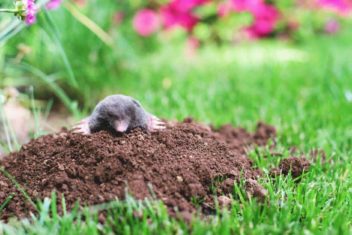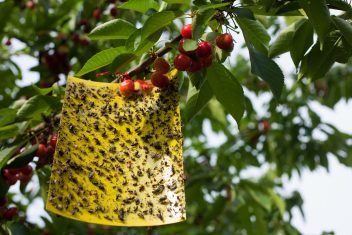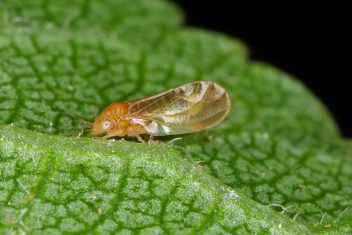Cucumber beetles are one of the most frustrating pests because they eat your plants at all ends. They devour everything from the roots to the fruits, and they carry a range of diseases that have the potential to kill your plants. It’s a double whammy.
Getting rid of these pests is a little easier than other pests because pesticides are effective against them, but that doesn’t mean you want to use those immediately. Preventative measures and organic treatments are also useful at controlling populations.
If you want to learn about their lifecycle and how to get rid of cucumber beetles, keep reading.
What are Cucumber Beetles?
Cucumber beetles are little insects that like to chew through the stems of seedlings and eat holes throughout your plants. Several different types live throughout the United States, and they feed on different plants.
For example, the striped cucumber beetle feeds entirely on cucurbit plants, such as cucumbers, squash, pumpkin, and watermelons. Spotted cucumber beetles feed on other plants as well as cucurbits. It’s possible to tell them apart simply by what they eat in your garden, but they also have different markings and coloring.
These little pests cause a lot of damage to your plants, from the roots to the fruit. They also spread bacterial diseases and viruses from plant to plant, such as:
- Fusarium wilt
- Mosaic virus
- Muskmelon necrotic spot virus
- Cucurbit bacterial wilt
How to Identify Cucumber Beetles
Since there are several different varieties of cucumber beetles, it’s important to remember that their coloring and markings might be different.
Here are a few identifying markers.
Striped Cucumber Beetle
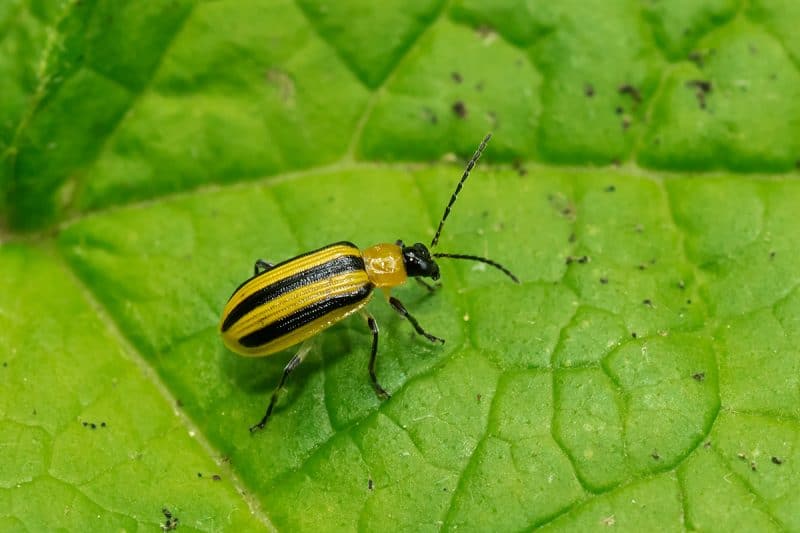
- 1/4 inch long as an adult
- yellow and black striped abdomen
- dark colored head and antennae
Spotted Cucumber Beetle
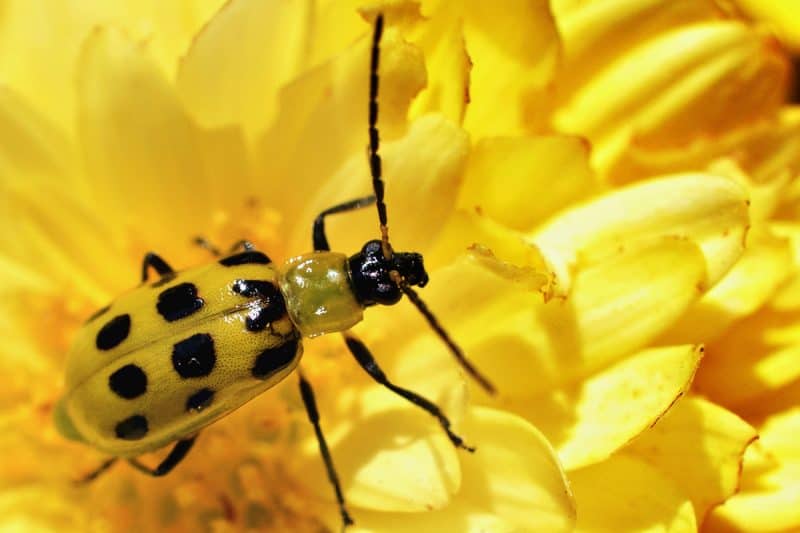
- 1/4 inch as an adult
- 12 black spots on a yellow abdomen
- worm-like larvae that are white with a dark head
These pests lay clusters of eggs under or on top of cracked, coarse soil. Look for clusters of yellow to orange, oval-shaped eggs on your soil. However, spotted beetles prefer to lay eggs in wet, coarse soil, and striped beetles like to lay eggs around the base of your plants.
The Lifecycle of Cucumber Beetles
Starting mid-April to early June, the beetles begin to leave their hibernating sites, feeding on seedlings as soon as they emerge. They’re heavy feeders, so they kill the seedlings once they start to munch. Then, the larvae feed on the plants’ roots until the little critters are large enough to emerge from the soil.
By August and September, the cucumber beetles are in the adult stage. At this point, they feed on the entire plant, including the vines and fruits. Nothing is safe when they’re adults.
It’s important to note that cucumber beetles overwinter in the weeds, garden debris, and woody areas around your garden. If they’re carrying diseases, the diseases also overwinter, and the pests can spread them in the next spring.
Signs of a Cucumber Beetle Infestation
Identifying the damage caused by these pests is a little easier than identifying them in the garden. The larvae feed on cucurbit roots, but the real damage comes when the adults start to feed on the entire plant. They eat the leaves, stems, vines, and fruit, stunting the growth of the plant.
They also feed on the flowers, and this reduces fruit production dramatically. Most of the time, these pests won’t be the only thing that kills your plants; they spread diseases along with them.
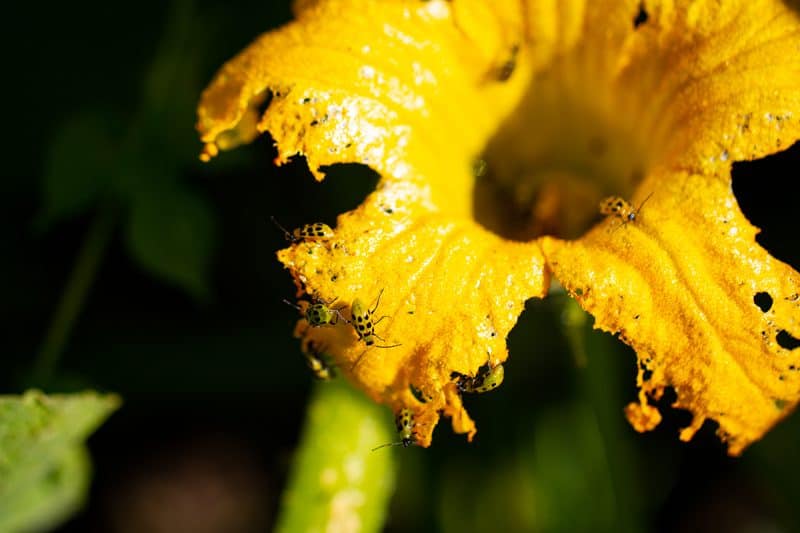
So, a few signs of a cucumber beetle infestation include:
- Holes in the stems and leaves
- Yellowing and wilting leaves
- Reduced fruit production
- Scars, marks, and holes in the fruits and blossoms
How to Prevent Cucumber Beetles in Your Garden
The best defense against cucumber beetles (and any pests) is to prevent them from taking over your garden from the start. Prevention is a lot easier than getting rid of pests once they take over and start to breed rapidly.
Try these healthy gardening practices to prevent these difficult pests from taking over your garden.
1. Till in the Fall
Tilling your garden in the fall exposes any cucumber beetles hiding in the soil to overwinter the upcoming harsh conditions. Make sure you till late in the fall when it’s cold and close to winter-like temperatures. The conditions will reduce the population for the next year. Also, remove any garden debris leftover from the fall harvest.
2. Rotate Crops
It’s best to rotate crops so that cucurbits (cucumbers, pumpkins, squash, watermelons, or muskmelons) aren’t in the same soil year after year. Remember, the cucumber beetle prefers cucurbit crops like cucumbers and zucchini, so if you move their location each gardening season, they’re less likely to visit.
3. Plant Trap Crops
You might have to sacrifice a few of your plants to the beetles, but planting a few cucurbit varieties at the perimeter of your garden keeps the pests from migrating to the harvesting plants you want to keep. Losing two or three plants is better than losing all of them. If the plants become infested, dig them out of the garden and burn them. Don’t put them into your compost.
4. Plant Late
If your area struggles with cucumber pests regularly, one simple trick is to plant later than usual. Wait until the beetles emerge from the soil and then plant in your garden.
Cucumber beetles are good at finding the delicate seedlings in your garden when they come out of hibernation. If they aren’t there when they emerge, they think that you don’t have the plants they want to eat, and they move off to the next garden to terrorize.
5. Companion Plant
Another trick that you can use is companion planting. Add flowers to your vegetable garden to deter pests from the plants you want to keep. Companion planting is a smart method to use in your entire garden to keep the pests away.

Radishes, tansy, and nasturtiums are all known to repel cucumber beetles. Plant these among and around your cucurbits.
6. Inspect Plants Regularly
Pests infestations are easiest to get rid of when you catch them early. Look at your seedlings for any sign of damage. Look over your plants for chewed leaves, petals, and fruits. Monitoring closely will allow you to take quick steps.
7. Use Row Covers
Put row covers over your plants in the spring to prevent any visiting beetles drom reaching your plants in the first place. Just remember that you’ll need to remove the covers when blossoms have formed to allow pollination to happen.
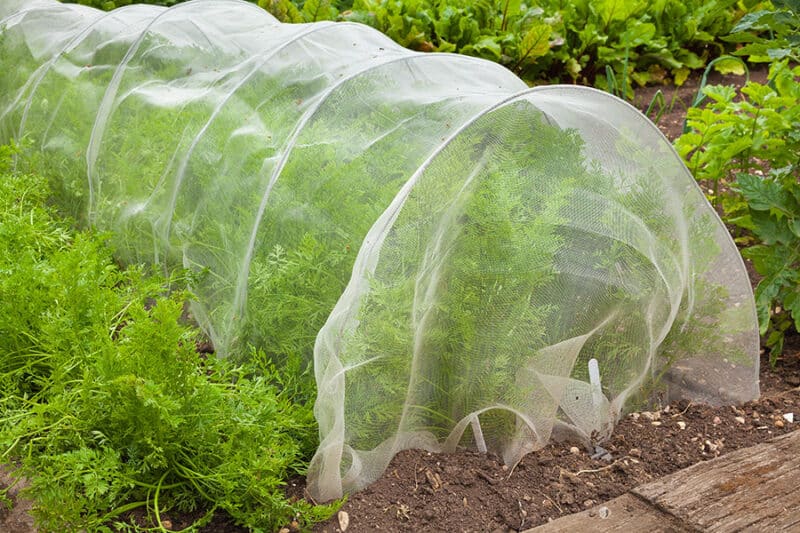
You can also hand-pollinate your plants and leave the covers in place full-time. Learn more about row covers in our guide.
How to Get Rid of Cucumber Beetles in Your Garden
After you identify cucumber beetles in your garden, you have to get rid of them. They’ll continue to grow in population and gradually kill your plants. It’s not smart to let them stay without figuring out how to get rid of a cucumber beetle infestation.
Here are some suggestions.
1. Use Sticky Traps
One of the first tricks that you can try is to place yellow sticky traps throughout your garden. As the pests move from plant to plant, these traps catch them and other pests. Plus, they’re so cheap; a box of 10 traps costs less than $3. It’s worth trying.
2. Hand Pick or Use a Small Vacuum
Next, try handpicking the pests off of the plants. It’s hard to handpick them, so if you want to try, wear yellow gloves that are coated in petroleum jelly to help keep a hold of these pests. Some people knock them off onto a waiting piece of cardboard and grab them from there.
If you don’t want to hand pick, try using a small handheld vacuum to suck up the beetles instead.
3. Release Beneficial Insects
Releasing natural predators into your garden is another natural way to get rid of these pests without spraying any harmful chemicals in your garden. Beneficial insects like braconid wasps, nematodes, and soldier beetles take care of cucumber beetles for you.
4. Use Insecticides
Gardeners may also use insecticides to control cucumber beetles, but remember that using toxic chemicals in your garden also kills natural predators and beneficial bugs. It should be a last-ditch effort to save your plants from destruction.
Using insecticides to get rid of cucumber beetles is a multi-step process because you have to get rid of both the adults and larvae, or the infestation will continue. Spray plants weekly for two to three weeks in mid-spring when you notice that the pests emerge from the soil.
Then, you must treat the plants in the early summer to kill off any of the emerging cucumber beetle larvae. In the late summer, spray again to kill any adults you might have missed with you sprayed the larvae.
Cucumber beetles are a frustrating pest because they attack plants at all sides and bring diseases. Thankfully, it’s easy to prevent these pests, and you have several ways to get rid of them before they kill your plants.
